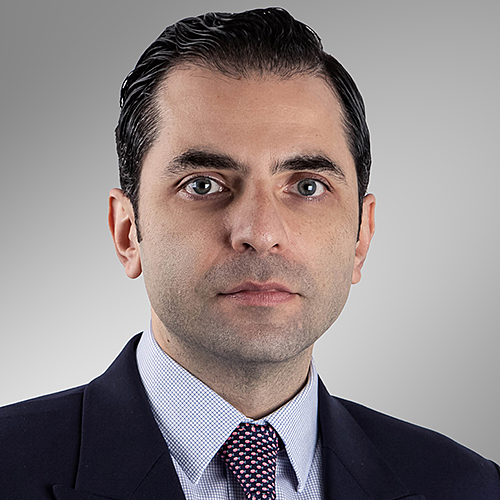In Asia, one structured product that is gaining popularity among discretionary portfolio managers is the actively managed certificate.
In a low-yield and volatile market environment, fund managers seek greater flexibility, transparency and cost efficiency in managing their portfolios and AMCs offer those.
The use of AMCs in Asia is on the rise, say industry experts say at The Asset forum, “Actively Managed Strategies and Discretionary Portfolio Management”. “At the core of DPM (discretionary portfolio management) is a multi-asset class portfolio diversification strategy, which is the most relevant. One difficulty of selling DPM strategies to Asian investors is the performance. A lot of asset managers go to prospective clients with performance numbers that are largely uninspiring and below benchmarks. There is a gap between investors’ expectations and reality,” says Pankaj Nagrath, executive director, investment of Bank of Singapore.
That is driving DPM managers to turn to AMCs, he adds. AMCs serve as “wrappers” for the underlying assets – equities, fixed income, commodities, among others. To enhance performance, the underlying assets are rebalanced periodically depending on the focus of the strategy.
These legal vehicles are set up by asset management companies with investors like private banks and high-net-worth-individuals (HNWIs) in mind.
In terms of structure, AMCs are similar to a collective investment scheme (CIS) which pools investors’ money into a portfolio and managed by a professional investment manager.
But unlike a CIS, AMCs are classified as structured products designed for professional investors. That means they don’t require registration with regulators. That saves holders of AMCs from spending on fees, making the product cost-effective compared to vehicles registered with the Securities and Futures Commission (SFC) in Hong Kong and the Monetary Authority of Singapore (MAS).
“An AMC is a structured note based on an index that is to be structured into an asset allocation agreement. It can be used for implementing thematic ideas or income ideas,” says Fayez al-Hicheri, head of structuring, APAC investment solutions group, Credit Suisse.
The investment ideas usually come from a combination of macro trends, themes or investment demand that is translated into an asset class, geography and time horizon, and implemented in the form of an investment strategy. AMCs thus can then be used to implement the investment strategy.
Experts, however, agree that AMCs must be used selectively.
Rohit Bhuta, chief executive officer of Crossinvest Asia, says there are clients that demand access to a particular strategy at Crossinvest, but don’t want to be counted among its direct clients. Introducing AMCs in the portfolio gives leeway for such clients to do just that.
For Arnulfo de Pala, chief investment officer at Trilake Partners, AMCs are worth revisiting. In particular, Trilake is open to investing in AMCs by an external manager that deliver results.
“We don’t preclude finding an external AMC that is attractive,” says de Pala, adding that the kind of AMCs to avoid are those that merely behave like a list of periodically rebalanced stocks that don’t deliver returns
Ted Low, partner of GAO Capital explains several uses for AMCs. “You use AMCs if you need it to market a product because maybe your clients doesn’t trust you to, or you need the brand name (of the issuer). But if you have a good relationship with the client you might as well go through a normal fund structure,” he says.
Philipp Piaz, partner at Finaport, illustrates some of the advantages and risks.
“Our clients are spread across different private banks. Let’s just presume we have 10 custodian banks within one time zone. By the time you trade through with 10 different banks you get 10 different prices. So there are advantages, which right now have not been mentioned to AMCs in such short time to market. Everybody gets the same price,” he notes.
Understanding the risk of AMCs, and explaining these risks to investors is also very important, according to Justin Kendrick, chief investment officer of Javelin Wealth Management.
“First off they’re synthetic. You actually don’t get underlying ownership of the asset. Secondly, you have a complete counterparty risk, and thirdly, an AMC can be as active or passive as you decide to set it up. The more active, the more costly it becomes,” Kendrick says.
Other risks that comes with investing in AMCs are issuer risk. In some cases, they aren’t flexible and can be costly.
“The single biggest risk we need to be cognizant of is the issuer risk. The second risk, from our experience is the flexibility or lack of flexibility when you run an AMC. When we talk about costs, we talk about the handling costs,” says Sanjay Guglani, chief investment officer of Silverdale Funds.
“When we’re dealing with clients with US$20-50 million or some large asset manager with US$500 million, we’re saying in terms of trading cost it’s exactly the same. The purpose of our bank is to onboard clients to make sure that the cost is very efficient, to make sure that they will grow quickly the assets under management,” says Stephane Goursat, executive director, investment solutions group, Asia Pacific of Credit Suisse.
Depending on the underlying assets, some AMCs may not offer the transparency clients seek. “When our index are going to be used for products such as an AMC they are 100% transparent. We publish all the constituents in the public space. So for us that’s not an issue. It’s actually an advantage. But if I’m an active manager with a long track record of generating (return), that’s probably much more of a concern for me,” says Adam Grabow, vice president, institutional business development, Asia of Morningstar.
Alexander Zeeh, chief executive officer of SEA Asset Management note that certain markets are unfamiliar still with AMCs.
“We were thinking about using an AMC when we launched our funds, which we actively managed. In particular the high yield bond fund that probably wouldn’t qualify for European investors who we target because the underlying securities which are OTC (over-the-counter) traded bonds are mostly unrated. We do buy. That doesn’t necessarily mean they are poor credit, but European investors who we target for our collective scheme probably never heard of them (AMCs). So we opted for a highly transparent UCITs SICAV fund, it’s a highly regulated structure. We opted for daily liquidity,” he adds.
According to Myron Cheung, senior structure, APAC investment solutions group at Credit Suisse, an AMC can provide access to a single product for many investors at the same time.
“For asset manager, it can also provide a low entry barrier in terms of assets under management. For the product structure and distribution it can also provide a faster time to market,” Cheung says.
Investors are advised to look out for counterparty risk linked to AMCs and examine the methodology of the vehicle closely.





.jpg)
.jpg)


